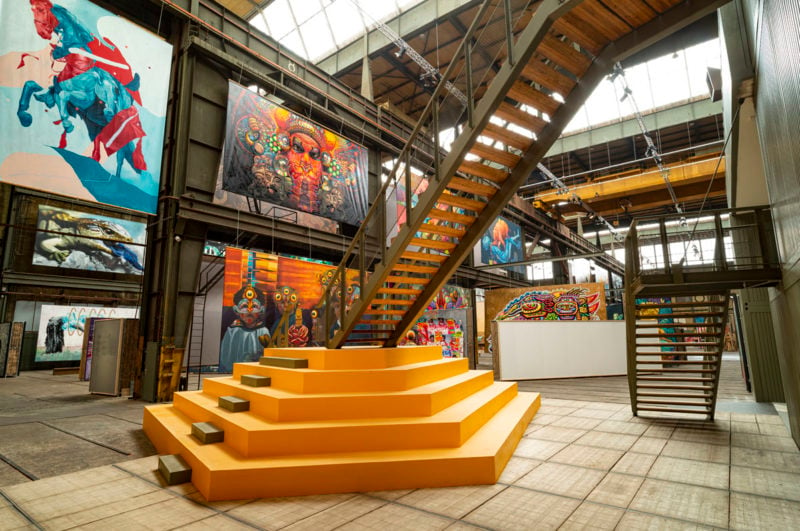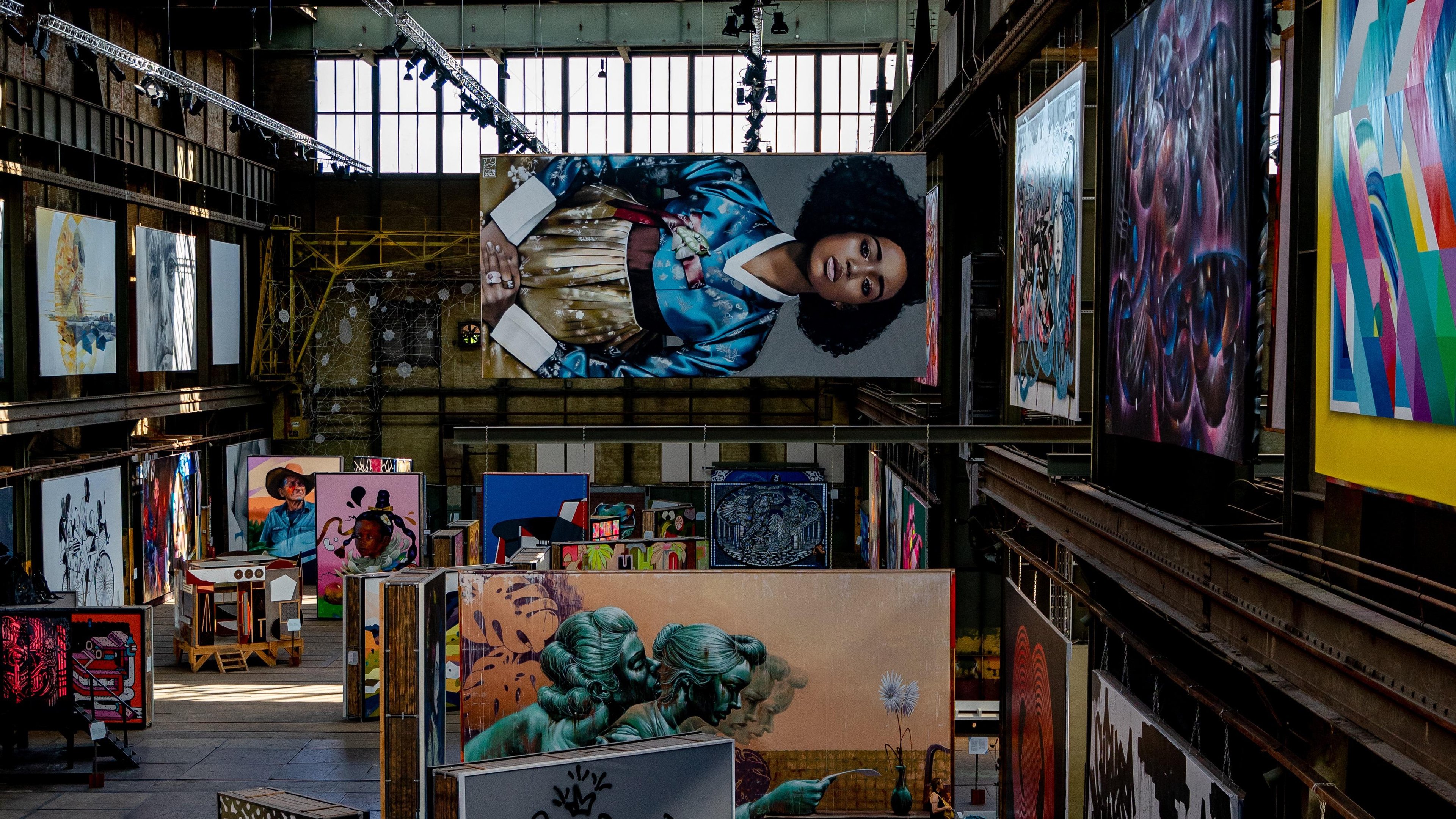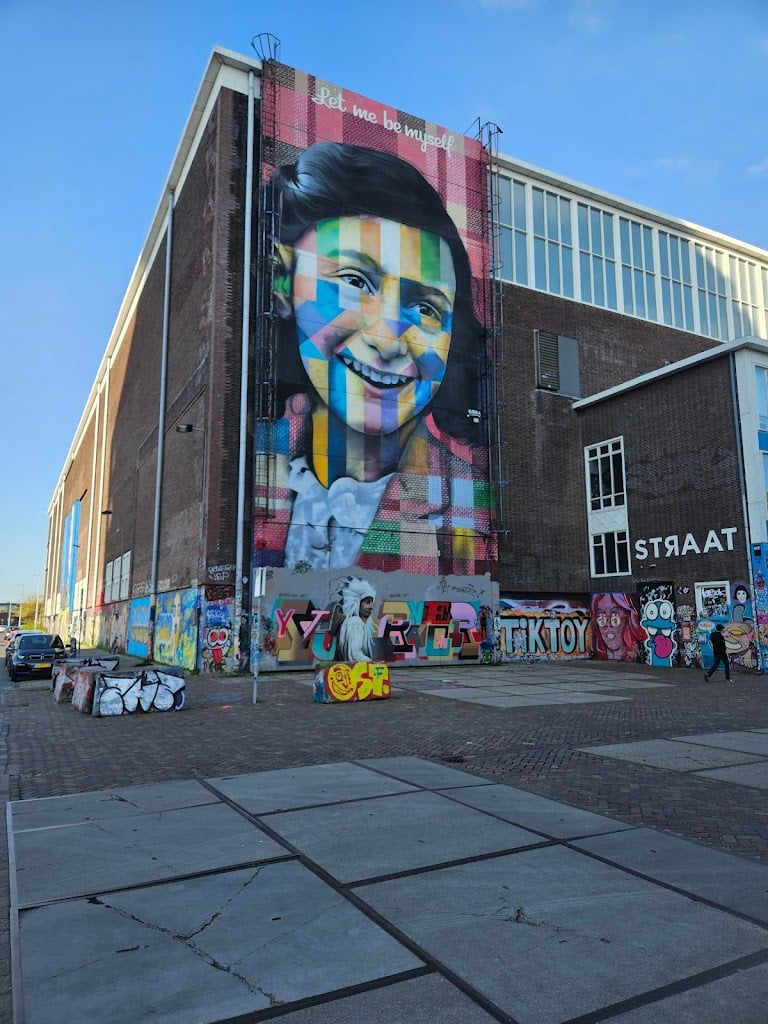STRAAT Museum





Ask ThatchGPT
Suggest a local expert to plan my trip
Suggest an unique itinerary for my Amsterdam trip
What foods do Amsterdam locals eat
What are some true hidden gems in Amsterdam
Help me brainstorm trip ideas for Amsterdam
Help me plan a family-friendly trip to Amsterdam
What people say
Victoria White
"The immense Straat Museum focusses on iconic street art and graffiti, bringing together over 160 artworks by 150+ artists from around the world. The 8000 square metre former warehouse, located in the seriously cool NDSM Wharf, is astonishing to walk around with cutting edge pieces suspended from steel beams dominating the raw industrial space.
On arrival you will find the façade covered with vibrant graffiti and murals, including the monumental portrait of Anne Frank, in the kaleidoscopic signature style of my favourite street artist, Eduardo Kobra. I’d recommend buying a ticket online via the museum’s website, however you can also purchase one on entry (costing around 20 euros when I visited).
Personally, I’d never visited a street art museum before and it was fascinating to be able to see so many beautifully crafted pieces displayed side by side all within one space. I also found being able to walk right up to the artwork to admire the detail unlocked a totally different perspective on viewing this style of large format art.
Make sure to wander around both sides of the hall to see everything they have on display and then make your way up to the Panorama Terrace where you can take in the scale of the museum from above. If you are intrigued to hear some of the stories behind the works, which often remain untold in the streets, you can book a guided tour here, which run on Saturdays and Sundays.
I guarantee you will leave the museum in awe of this progressive art movement after experiencing some of these mind-blowing pieces!
Tip: If you are staying at the Sir Adam hotel you can walk here in around 30 minutes but if you are travelling from Amsterdam Centraal Station you will need to catch the free ferry towards NDSM which takes around 15 minutes. "
Read more in:
Lotte Geldermans
"Discover the most impressive wall-art pieces in the street museum. While you're in the area, which you reach through a free ferry from Central Station, walk around and see if you can spot the Anne Frank wall art."
Read more in:
Emma B
"Really excellent Street Art museum, a fun place to visit. Bear in mind that it's in a warehouse so in winter it's cold even if it is indoors. Come prepared. "
Read more in:
Mentioned in these guides
About STRAAT Museum
Get the inside scoop on STRAAT Museum from local experts, travel creators, and tastemakers. Browse genuine trip notes, STRAAT Museum reviews, photos, travel guides, and itineraries from real travelers and plan your trip with confidence.
Website
Phone
Save this spot for later or start mapping out a new trip today
Try our AI Travel Assistant and get instant answers to any questions about your trip.
Ask ThatchGPT


